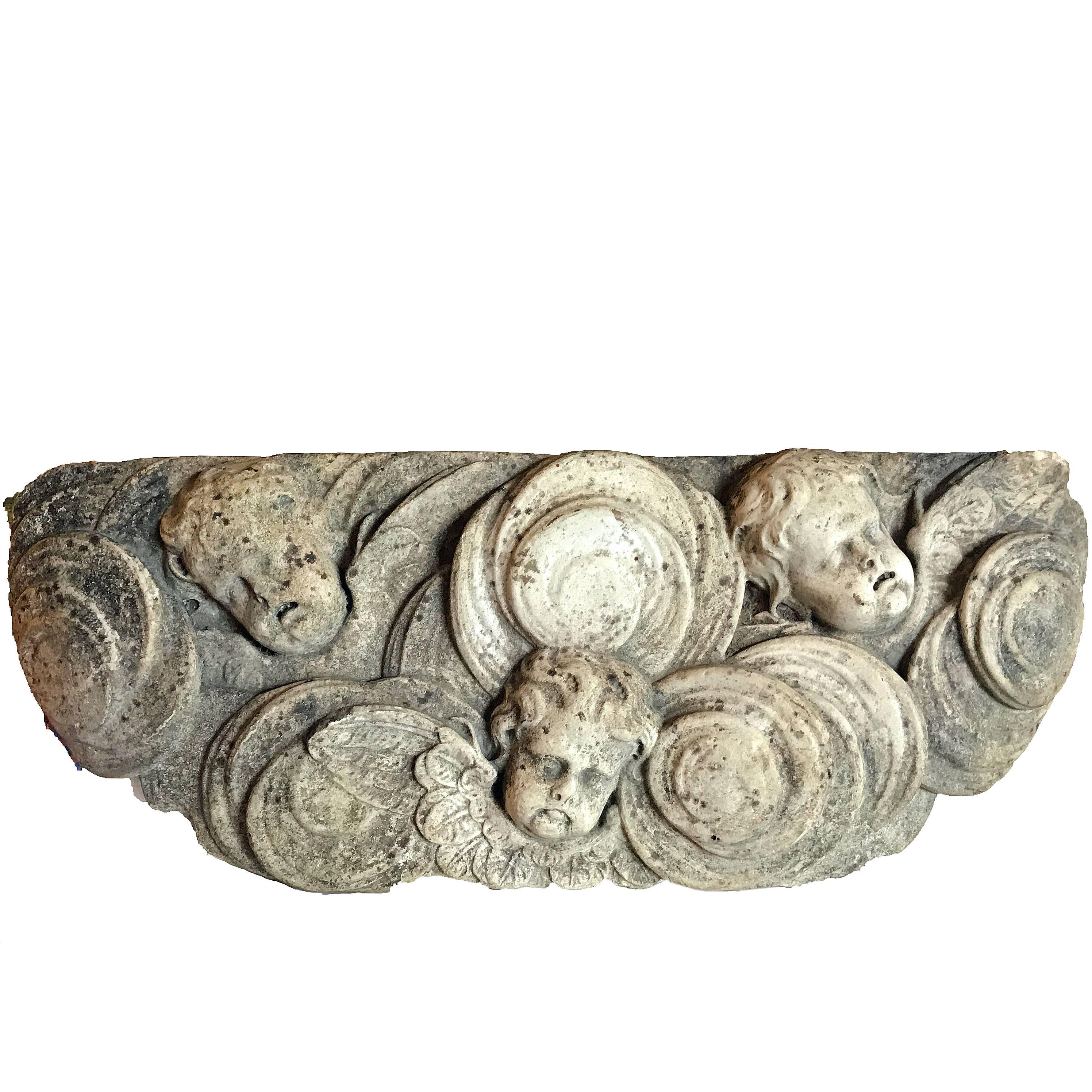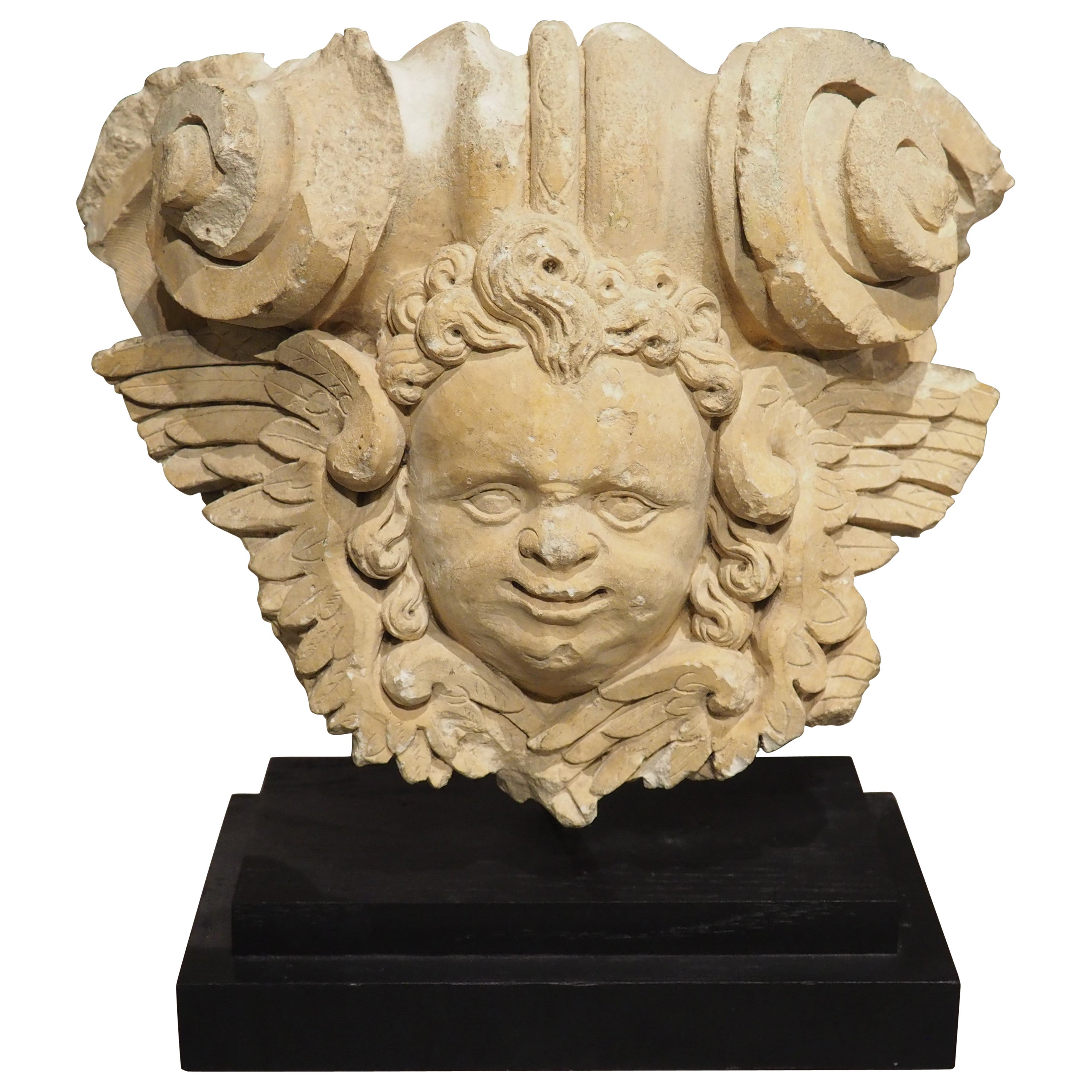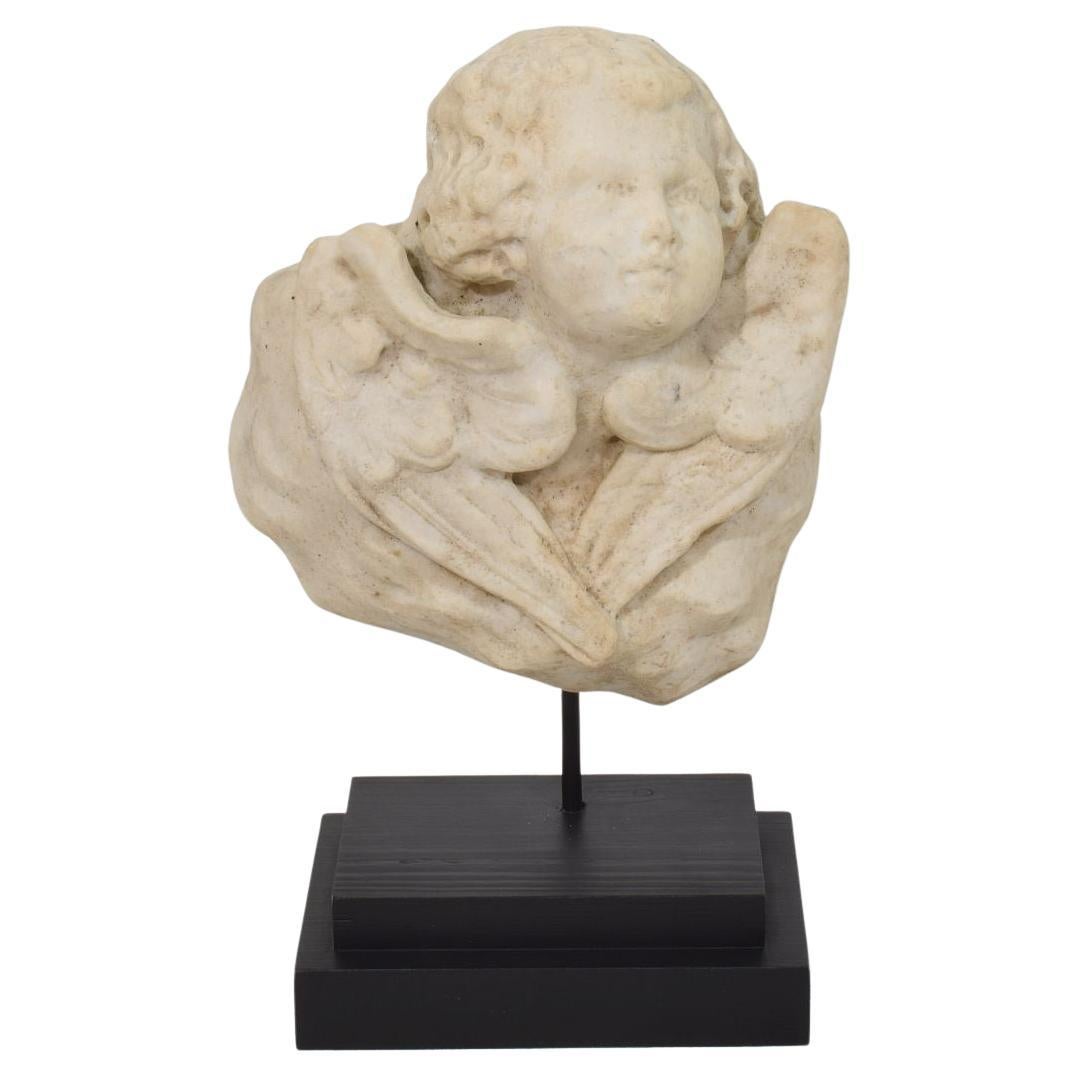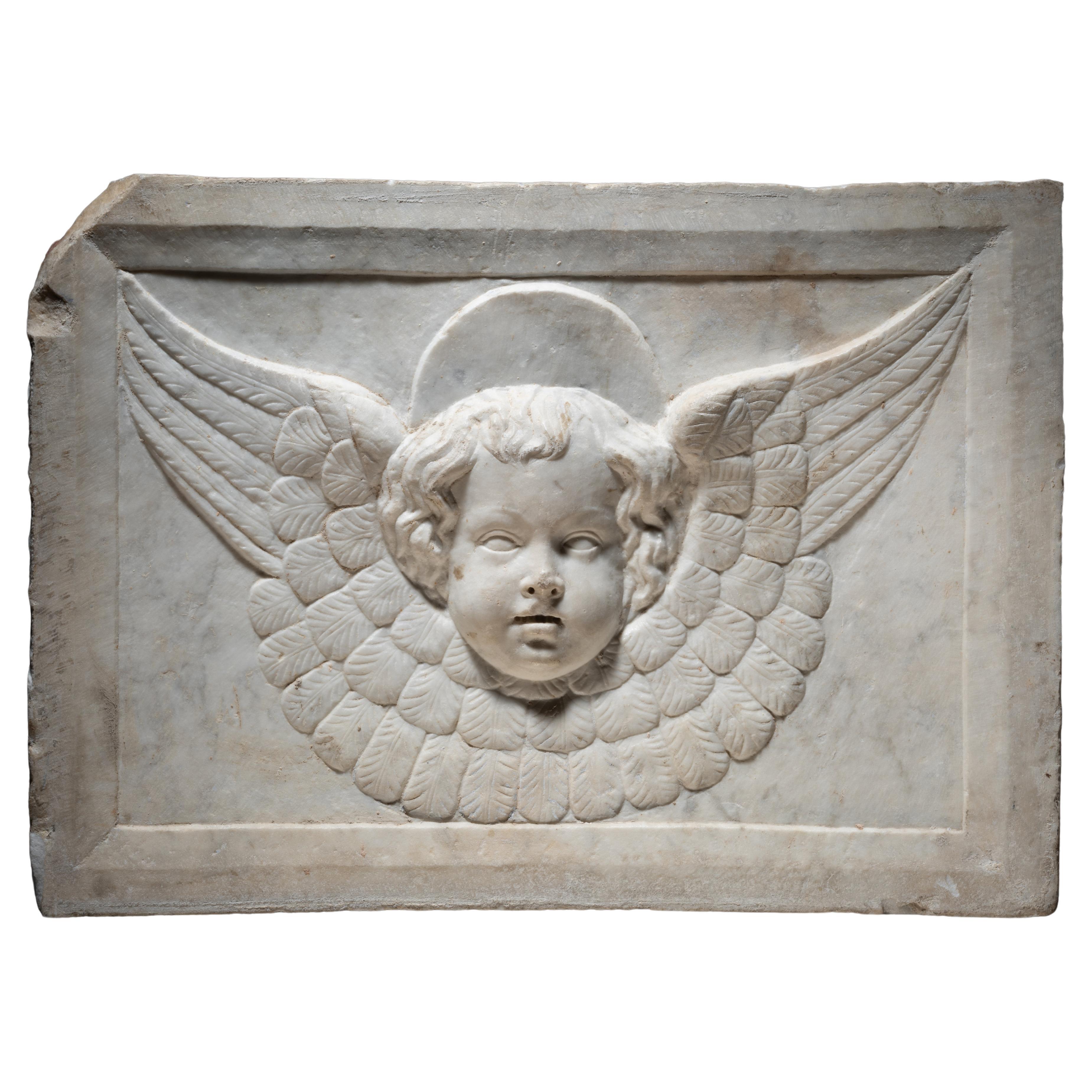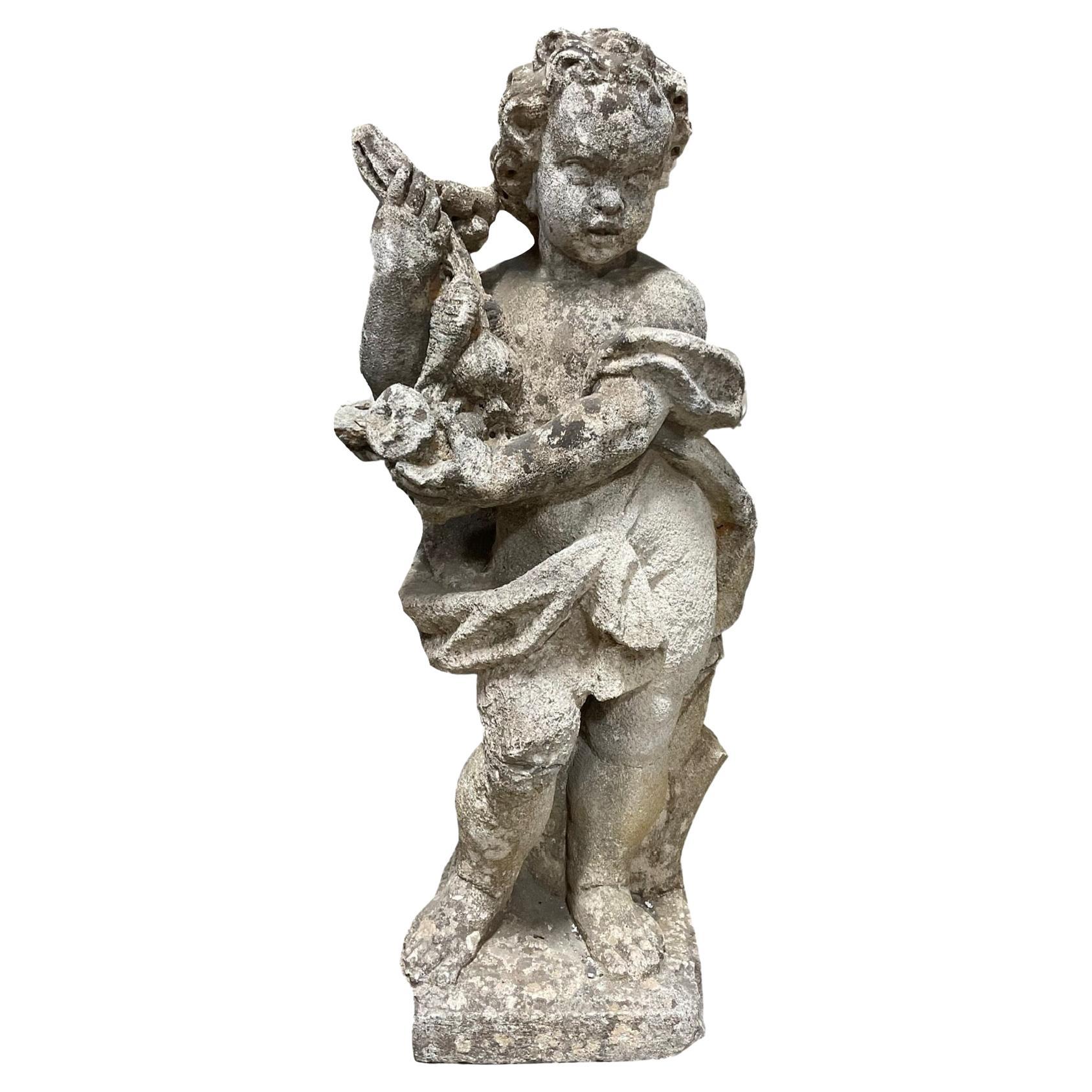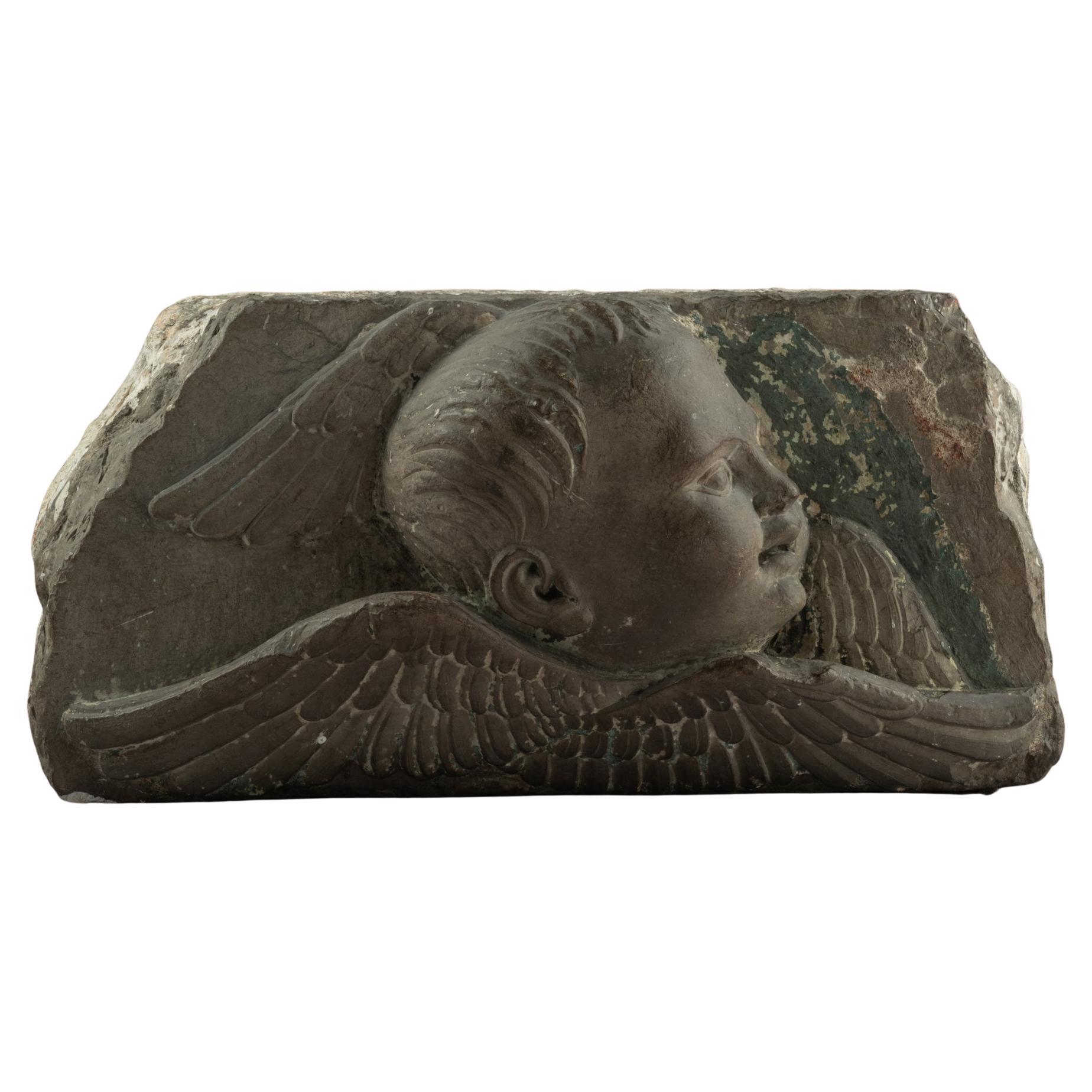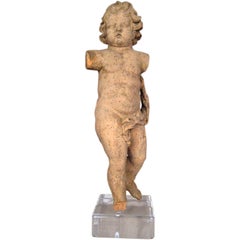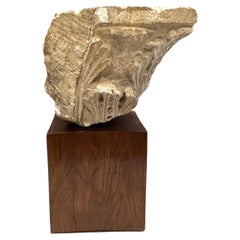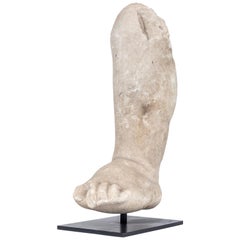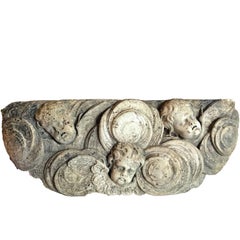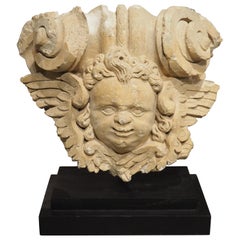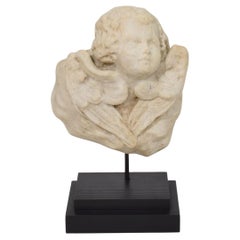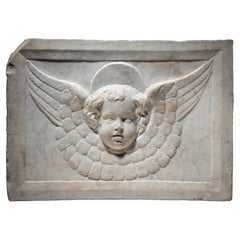Items Similar to 18th c., Marble Cherub Fragment
Want more images or videos?
Request additional images or videos from the seller
1 of 5
18th c., Marble Cherub Fragment
$5,580
$9,30040% Off
£4,257.69
£7,096.1540% Off
€4,843.44
€8,072.4140% Off
CA$7,836.13
CA$13,060.2140% Off
A$8,575.70
A$14,292.8340% Off
CHF 4,531.50
CHF 7,552.5140% Off
MX$102,356.64
MX$170,594.3940% Off
NOK 57,827.64
NOK 96,379.4040% Off
SEK 52,888.08
SEK 88,146.8140% Off
DKK 36,178.01
DKK 60,296.6840% Off
About the Item
Hand-carved, Northern Italian, winged, marble cherub's head mounted on a custom, Lucite base.
- Dimensions:Height: 17 in (43.18 cm)Width: 16 in (40.64 cm)Depth: 6 in (15.24 cm)
- Materials and Techniques:
- Place of Origin:
- Period:
- Date of Manufacture:1700's
- Condition:Additions or alterations made to the original: Mounted later on Lucite base. Wear consistent with age and use. Minor structural damages. There is some discoloration, and loss to the wings, as it is a fragment.
- Seller Location:Los Angeles, CA
- Reference Number:1stDibs: U0905188539109
About the Seller
4.9
Vetted Professional Seller
Every seller passes strict standards for authenticity and reliability
Established in 2000
1stDibs seller since 2008
91 sales on 1stDibs
Typical response time: <1 hour
- ShippingRetrieving quote...Shipping from: Los Angeles, CA
- Return Policy
More From This Seller
View AllCarved Wood Statue of a Cherub
Located in Los Angeles, CA
18th c., hand-carved wood statue of a cherub mounted on a custom, Lucite base.
Category
Antique 18th Century and Earlier Italian Statues
Materials
Wood
19th Century Marble Capital Fragment Mounted on Wooden Base
Located in Los Angeles, CA
Hand-carved marble capital fragment mounted on a wooden base. Base: 9.5" W x 7.5"D.
Category
Antique 19th Century French Mounted Objects
Materials
Marble
Renaissance Era, Marble Fragment of a Leg
Located in Los Angeles, CA
Chic, 15th Century, Roman marble fragment of a left foot and calf mounted on a custom iron stand.
Category
Antique 15th Century and Earlier Italian Renaissance Figurative Sculptures
Materials
Carrara Marble
17th Century, Carrera Marble Lion Fountain Head
Located in Los Angeles, CA
Stunning, solid white, Carrara marble lions head from a fountain in Florence featuring a flowing main and a fabulous patina. Mounted on a custom, iron base. The piece hails from the ...
Category
Antique Early 1600s Italian Sculptures
Materials
Marble
Early 1600s, Marble Bust of Athena
Located in Los Angeles, CA
Exceptional, hand carved all the way around, 17th century, Carrara marble bust of Athena in a helmet surrounded by a laurel wreath. Fabulous expression,...
Category
Antique Early 1600s Italian Figurative Sculptures
Materials
Stone, Carrara Marble
16th Century Marble Statue of a Robed Figure
Located in Los Angeles, CA
Fine, hand-carved, Carrara marble, robed figure from central Italy modeled in the Classical, contrapposto pose. The inscription fragment on the base reads "..under the auspices of...".
Category
Antique 16th Century Italian Statues
Materials
Marble
You May Also Like
A Rare French Marble Relief of Putti Fragment, Late 17th Century
Located in Sheffield, MA
A Rare French Marble Relief of PuttiFragment
Late 17th Century Century
Height 14 in. Width 33 in.
Carved throughtout with three putti figures
Provenance:
Private Collector, Bor...
Category
Antique 18th Century and Earlier French Baroque Statues
Materials
Stone, Marble
A 17th Century Mounted French Limestone Carving of a Winged Angel
Located in Dallas, TX
Originally part of a larger architectural from a French building in the 1600s, this hand-carved limestone fragment of a winged angel has been mounted more recently to a painted black...
Category
Antique 17th Century French Baroque Figurative Sculptures
Materials
Stone, Limestone, Metal
Italian 18th Century Baroque Marble Winged Angel Head
Located in Buisson, FR
Beautiful weathered white marble angel head.
Italy, circa 1750. Good but weathered condition
Measurement here below includes the wooden pedestal.
H:29,5cm W:19cm D:12cm
Category
Antique 18th Century Italian Baroque Architectural Elements
Materials
Marble
$689 Sale Price
54% Off
Cercle of Jacopo della Pila - Marble relief depicting a winged Cherub
Located in Bruxelles, BE
Cercle of Jacopo della Pila (Lombard, in Naples 1471-1502)
Marble relief depicting a winged Cherub
Naples, second half of15th century
40 x 57 x 12 cm
Exquisitely carved, this relief portrays a winged cherub with cascading hair and delicate features. The cherub's plump, smooth countenance, rounded cheeks, outlined lips, and finely drawn nose emanate a sense of tenderness. The quadrangular module, is adorned with a carved frame. The relief ascends gradually, transitioning from the low relief of the wings to the high relief of the head.
The rectangular frame and the subtly curved form of the artwork suggest that the relief likely adorned the upper part of an arch or a vaulted chapel. The type is that of the perspective room with a coffered ceiling decorated with figures of winged cherubs, which is found in various Neapolitan chapels of the 15th century. Coffered ceilings attest to the recovery of antiquity and the search for luxury in Renaissance architecture, first in Florence, then in Rome and Naples. The majority of the numerous family chapels and tombs built during the late fifteenth century in south of Italy employ the new formal vocabulary of the Florentine Renaissance in a self-confident manner that permitted a broad spectrum of variations.
The escalating admiration for the classical world, coupled with the development of perspective, significantly contributed to the Renaissance endorsement of coffered ceilings. This artistic and constructive device drew inspiration from the intricate marble patterns observed in historical landmarks such as the Arch of Titus, the Temple of Vesta in Tivoli, the Pantheon, and the Basilica of Maxentius. A distilled product of both mathematical and artistic cultures, deeply scrutinizing the ancient world, the coffered ceiling plays a vital role in the perspective construction of space with its regular and directional geometry. The motif of the coffered ceiling decorated with cherubs in relief was introduced in Naples by Francesco Laurana in the plastic decoration of the Arch of Castelnuovo. Laurana's impact on the art scene in the south of Italy was profound. The introduction of the winged cherub into the region's artistic vocabulary bridged the gap between the classical and the contemporary, creating a synthesis that resonated with both aesthetic and spiritual sensibilities. His influence extended beyond the immediate visual appeal, shaping the cultural identity of the Renaissance in southern Italy. Although the plastic decoration of the Arch of Castelnuovo cannot certainly be ascribed to a mature Renaissance style, it was precisely on this occasion that the sculptors who worked there could get to know and export throughout the Italian peninsula that type of "Florentine classicism" which, even in the 15th century Naples, was conditioned by the Burgundian culture imported into the Kingdom by Alfonso of Aragon himself, with artists called from Spain and Northern Europe. The coffered ceiling, with its geometric patterns and Laurana's winged cherubs nestled within, became a symbol of refinement and cultural sophistication. The relief sculptures, carefully integrated into the overall design, transformed the ceiling into a celestial realm, inviting viewers to contemplate the divine while immersed in the grandeur of the Renaissance space.
Similar winged cherubs appears also in the Naples cathedral. Within the renowned Succorpo Chapel, a mesmerizing marble coffered ceiling adorned with cherubs epitomizes the splendor of the Neapolitan Renaissance. The interplay of light and shadow on the textured surface of the marble coffered ceiling introduces an ethereal dimension, providing an immersive visual experience for observers. The geometric precision and the repeated patterns, reminiscent of classical motifs, establish a sense of harmony and balance that has become the hallmark of the Neapolitan interpretation of Florentine Renaissance aesthetics.
Although probably intended to be admired from a distance, this cherub is intricately detailed and exquisitely rendered: the face and hair are elegantly outlined and the feathers are textured through juxtaposed lines. The marble, both figurative and decorative, adheres to the principles of balance and restrained ornamentation typical of the « Florentine Classicism ». Harmonious shapes and gracefully orchestrated curves , rooted in the classical repertoire, converge to evoke a sense of ethereal beauty. The surface displays the masterful use of a chisel to intricately carve the feathers and facial features, creating an almost abstract quality.
This work is a testament to a sculptor of great skill and rich figurative knowledge, seamlessly blending classical firmness in contours with a refined treatment of the marble's surface. The combination of tradition and innovation point to a stylistic idiom from Lombardy, in particular we can find some comparaisons with the works of Jacopo della Pila, sculptor of Lombard origin working in Naples in the second half of the 15th century. He is documented there between 1471 and 1502, and is a protagonist of the Aragon Renaissance in the second half of the Quattrocento, together with the other great Northern sculptor active in the kingdom, Domenico Gagini.
the first commission he received dates back to August 9, 1471, when Jacopo publicly committed to sculpting the funerary monument of Archbishop Nicola Piscicelli to be placed in the Cathedral of Salerno. The last known work is an altar ordered on July 29, 1502, by the noble Jacopo Rocco for the church of San Lorenzo Maggiore in Naples. Between these two chronological extremes (1471-1502), we must place the fervent activity of the artist, who had trained in Rome, perhaps under the guidance of Paolo Romano but also engaged in dialogue with other major artists of the city, especially Isaia da Pisa. He enriched his experience in Naples, initially drawing inspiration from the works of Domenico Gagini and later from the Tuscan masterpieces of Antonio Rossellino and Benedetto da Maiano destined for the church of Santa Maria di Monteoliveto. Jacopo della Pila's artistic personality is thus based on a complex interplay of influences, contributing to the definition of a highly personal style.
Close comparaison can be made between our cherub and the winged angels reliefs...
Category
Antique 15th Century and Earlier Italian Renaissance Figurative Sculptures
Materials
Marble
$23,013 Sale Price
20% Off
English Limestone Cherub Sculpture
Located in Dallas, TX
Bring a touch of history to your décor with this English Limestone Cherub Sculpture, crafted from durable limestone in 1890. This intricate carving of...
Category
Antique 18th Century Statues
Materials
Limestone
Renaissance Winged Cherub Relief
- Florence, 15th century
Located in Bruxelles, BE
Renaissance Winged Cherub Relief
Florence, Second Half of the 15th Century
Stone with traces of polychromy
Provenance: Important private collection, Northern Italy
This exceptional...
Category
Antique 15th Century and Earlier Italian Renaissance Figurative Sculptures
Materials
Stone
More Ways To Browse
Antique Cherub
Cherub Furniture
Antique Italian Statues
Marble Fragment
Italian Marble Statues
18th Century Fragment
Marble Cherub
Cherub Heads
Carved Marble Statue
18th Century Cherub
Carved Marble Head
Cherub Statues
Antique Fragment Marble
18th Century Italian Cherub
Statue Fragment
Marble Statue 18th Century
Marble Statue Fragment
Lifesize Statue
